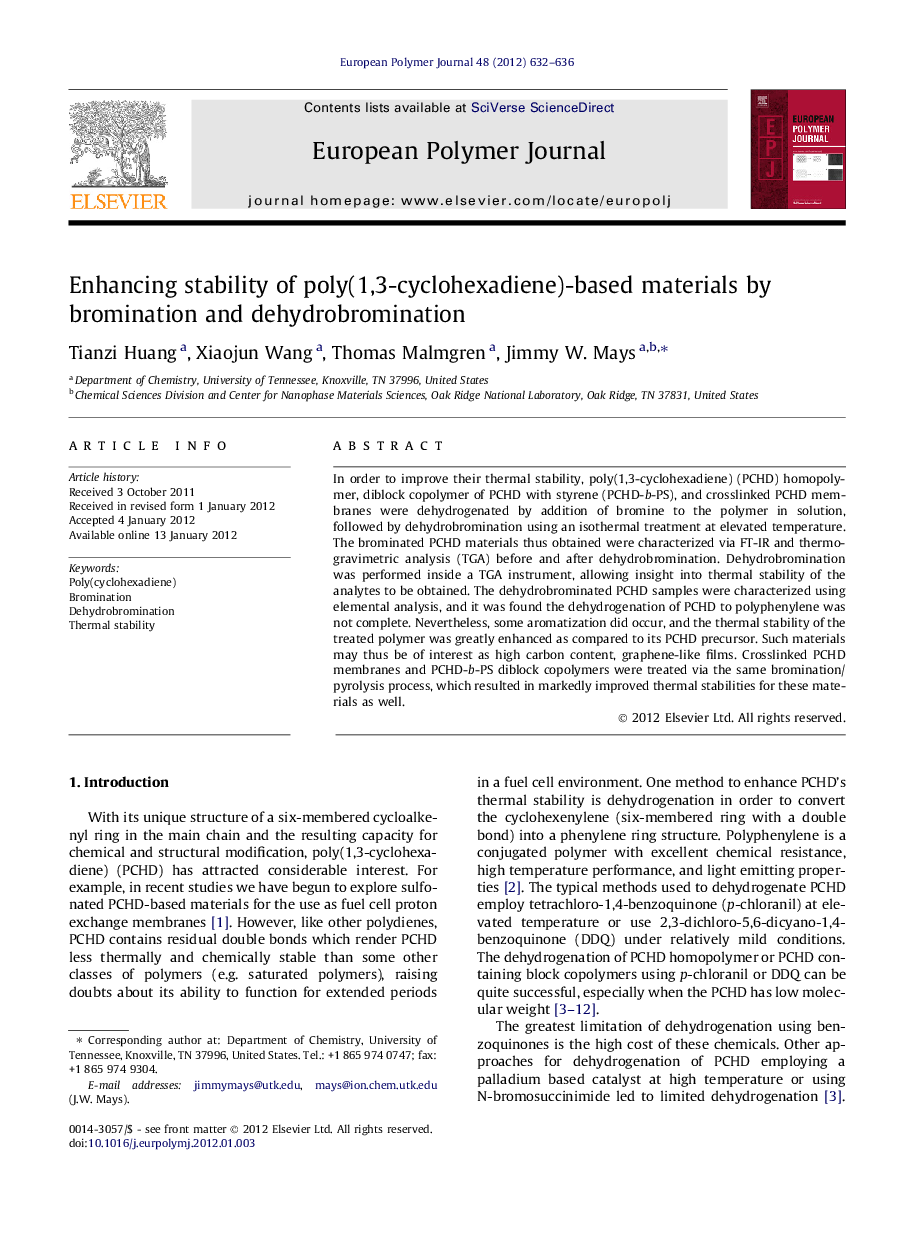| Article ID | Journal | Published Year | Pages | File Type |
|---|---|---|---|---|
| 1398340 | European Polymer Journal | 2012 | 5 Pages |
In order to improve their thermal stability, poly(1,3-cyclohexadiene) (PCHD) homopolymer, diblock copolymer of PCHD with styrene (PCHD-b-PS), and crosslinked PCHD membranes were dehydrogenated by addition of bromine to the polymer in solution, followed by dehydrobromination using an isothermal treatment at elevated temperature. The brominated PCHD materials thus obtained were characterized via FT-IR and thermogravimetric analysis (TGA) before and after dehydrobromination. Dehydrobromination was performed inside a TGA instrument, allowing insight into thermal stability of the analytes to be obtained. The dehydrobrominated PCHD samples were characterized using elemental analysis, and it was found the dehydrogenation of PCHD to polyphenylene was not complete. Nevertheless, some aromatization did occur, and the thermal stability of the treated polymer was greatly enhanced as compared to its PCHD precursor. Such materials may thus be of interest as high carbon content, graphene-like films. Crosslinked PCHD membranes and PCHD-b-PS diblock copolymers were treated via the same bromination/pyrolysis process, which resulted in markedly improved thermal stabilities for these materials as well.
Graphical abstractFigure optionsDownload full-size imageDownload as PowerPoint slideHighlights► We treated poly(cyclohexadiene) materials by bromination/debromination. ► Thermal stability of the treated polymer was greatly enhanced. ► Dehydrogenation to polyphenylene was not complete. ► Some aromatization did occur. ► Such materials are of interest as high carbon, graphene-like films.
